
Related
Guests
- Lt. Steve SimmonsU.S. Navy sailor who served on board the USS Ronald Reagan, the first ship to respond to the 2011 earthquake and tsunami at the Fukushima Daiichi nuclear power plant in Japan. Since returning, Simmons has suffered from serious health ailments potentially related to radiation exposure. This April, Simmons will “medically retire” from the military. He is part of the class action lawsuit against Tokyo Electric Power Company, or TEPCO.
- Charles Bonnerattorney representing sailors from the USS Ronald Reagan in their lawsuit against TEPCO for the health damages they sustained from Fukushima radiation during Operation Tomodachi, the humanitarian aid mission to Japan immediately after the March 11, 2011 earthquake and tsunami.
- Kyle Clevelandsociology professor and associate director of the Institute for Contemporary Asian Studies at Temple University’s Japan campus in Tokyo. Cleveland’s recent article in The Asia-Pacific Journal is called “Mobilizing Nuclear Bias: The Fukushima Nuclear Crisis and the Politics of Uncertainty.”
Links
- "Mobilizing Nuclear Bias: The Fukushima Nuclear Crisis and the Politics of Uncertainty." By Kyle Cleveland
- "Documents Say Navy Knew Fukushima Dangerously Contaminated the USS Reagan." By Harvey Wasserman (EcoWatch)
- "Report: USS Reagan Exposed to Radiation Levels Exceeding What Japanese Government Said" (Stars & Stripes)
Three years after the triple meltdown at the Fukushima nuclear power plant, scores of U.S. sailors and marines are suing the plant’s operator, the Tokyo Electric Power Company, for allegedly misleading the Navy about the level of radioactive contamination. Many of the servicemembers who provided humanitarian relief during the disaster have experienced devastating health ailments since returning from Japan, ranging from leukemia to blindness to infertility to birth defects. We are joined by three guests: Lieutenant Steve Simmons, a U.S. Navy sailor who served on board the USS Ronald Reagan and joined in the class action lawsuit against TEPCO after suffering health problems; Charles Bonner, an attorney for the sailors; and Kyle Cleveland, sociology professor and associate director of the Institute for Contemporary Asian Studies at Temple University’s Japan campus in Tokyo. Cleveland recently published transcripts of the Navy’s phone conversations about Fukushima that took place at the time of the disaster, which suggest commanders were also aware of the risk faced by sailors on the USS Ronald Reagan.
Transcript
NERMEEN SHAIKH: Three years ago this month, our next guest, Navy Lieutenant Steve Simmons was stationed aboard the USS Ronald Reagan off the coast of Japan. The aircraft carrier provided humanitarian assistance in the days after the massive 9.0-magnitude earthquake and tsunami devastated Japan’s northeast coast. Simmons, along with thousands of other emergency responders on the USS Reagan, were diverted from their naval exercises in the Pacific Ocean and steered to Japan’s decimated coastline to distribute food parcels, clothes and blankets to victims. At the time, they were unaware they were entering into an unprecedented nuclear crisis: a triple meltdown at the Fukushima Daiichi nuclear power station.
AMY GOODMAN: Shortly after returning home, Steve Simmons blacked out while driving. Then he began regularly experiencing gastrointestinal problems and soaring fevers. Within months, Simmons’ legs buckled. He was no longer able to walk. He’s one of many first responders who say they’ve experienced devastating health ailments since returning from Japan, health ailments ranging from leukemia to blindness, to infertility, to birth defects.
Simmons is now part of a class action lawsuit against the plant’s operator, Tokyo Electric Power Company, or TEPCO, that accuses the utility of failing to disclose the risks of radiation exposure. Navy sailor Lindsay Cooper and marine Mathew Bradley are also part of the lawsuit.
MATHEW BRADLEY: This degenerative disease in my lower back, and I have no family history of it. And I have no accident that could have caused it. And I have some digestion problems, as well, and stomach pain, as well.
LINDSAY COOPER: Right now I have a lot of weight issues and thyroid issues, issues that I didn’t have before I came in and then issues that I didn’t have after I had my child. But I’m just—I personally can’t afford to go to a doctor and get checked out, like the others can. I’m kind of almost nervous, if you want to say—I’m really nervous to find out what’s going to happen.
NERMEEN SHAIKH: That was Lindsay Cooper and Mathew Bradley speaking to the Ecological Options Network.
Now, recently obtained phone conversations suggest the U.S. Navy was also aware of the risk faced by sailors on the USS Ronald Reagan responding to the Fukushima disaster. The conversations, obtained under the Freedom of Information Act, feature naval officials who acknowledge that even while a hundred miles away from Fukushima, the carrier was exposed to levels of radiation that were 30 times greater than normal.
AMY GOODMAN: The transcript also contains discussion of health impacts that could come within a matter of 10 hours of exposure, including thyroid problems. However, the Navy leadership continues to deny sailors were exposed to harmful levels of radiation, even though those aboard were later told to scrub the ship and equipment in protective suits.
Democracy Now! invited a member of the Navy to join us on the show, but they declined. However, Lieutenant Greg Raelson of the Navy’s Office did speak to us briefly, saying servicemembers who participated in Operation Tomodachi, the Fukushima relief effort, were not at risk of radiation poisoning.
LT. GREG RAELSON: There’s no indication that any U.S. personnel supporting Operation Tomodachi experienced radiation exposure at levels associated with the occurrence of long-term health effects. The tri-service dose assessment and registry working group studied the available data. And their report, which was peer-reviewed by a non-government counsel of subject matter experts, determined that the highest whole-body dose to any crew member doesn’t present any risk greater than normally accepted during everyday life.
AMY GOODMAN: Well, for more, we are joined now by three guests.
In Washington, D.C., Lieutenant Steve Simmons is with us, the U.S. Navy sailor who served on board the USS Ronald Reagan, participating in the class action lawsuit against TEPCO. This April, Simmons will “medically retire” from the military.
In San Francisco, California, we’re joined by one of his attorneys, Charles Bonner, who is representing the class action lawsuit.
And via Democracy Now! video stream from Yokohama, Japan, we’re joined by Kyle Cleveland, sociology professor and associate director for the Institute for Contemporary Asian Studies at Temple University’s Japan campus in Tokyo. Cleveland’s recent article in The Asia-Pacific Journal is called “Mobilizing Nuclear Bias: The Fukushima Nuclear Crisis and the Politics of Uncertainty.” In it, he published transcripts of the Navy’s phone conversations about Fukushima that took place back in March of 2011, three years ago at the time of the disaster.
We welcome you all to Democracy Now! Let’s go first to Lieutenant Steve Simmons, the U.S. Navy sailor who participated in the Fukushima relief efforts. Can you talk, Lieutenant Simmons, about what happened on March 11th, 2011, three years ago? Where were you, and what were you called to do?
LT. STEVE SIMMONS: Well, after—after the earthquake and tsunami that devastated the shores of Japan, we—the Ronald Reagan had already been on a scheduled deployment, and following that earthquake and tsunami, we were called away from our exercise there in the Pacific to provide humanitarian assistance to the citizens of Japan.
AMY GOODMAN: And what happened next?
LT. STEVE SIMMONS: We arrived on, if I remember correctly, the 12th of March, so the following day, which had been after the first reactor had already melted down. And the understanding of everybody on board was that there was no health risk, no dangers, as far as the radiation exposure goes. At one point, we had actually sat in the plume off the reactor for approximately five hours. And another time, we actually had to secure the water system, because we actually had brought contaminants up into the water.
AMY GOODMAN: How close were you to it?
LT. STEVE SIMMONS: Honestly, at this point, I hear conflicting stories each time. I know the—I’ve seen photos where you can clearly see the mountains of Japan right there in the background. So, if I remember correctly, the human eye can only see about 17 miles on the horizon, so you’re clearly within visible distance. But then there’s also reports that we were no closer than 160 miles. So, at this point, which one’s accurate, I’m not exactly—you know, I would have to believe the photos.
NERMEEN SHAIKH: Lieutenant Simmons, at the time, you weren’t aware that you were being exposed to any radiation. When did you start feeling the impact on your health? And what are some of the things that have happened since?
LT. STEVE SIMMONS: It wasn’t until November of 2011. We returned in September. At the end of November, I had started noticing something was wrong. The first thing was—I was actually driving into work. I was driving down Route 50 heading into Arlington, and I blacked out and drove my truck up on a curb. Following that, I started coming down with what maybe I thought was just maybe a flu, started running fevers. I dropped about 20 to 25 pounds unexpectedly and then started experiencing night sweats, difficulty sleeping, and had been back and forth to the doctor numerous times for lab work and other studies to try to figure out what’s been going on. And from January to March of 2012, I had been hospitalized tree different times.
The first hospitalization, they couldn’t figure anything out. The only thing they supposedly came up with was a sinus infection, and just kind of blew off the thought that radiation had anything to do with it. In fact, the intern told me that if it was radiation, I had—I should have seen symptoms long before now. Three days later, after I was discharged, I was back in the hospital because my lymph nodes started swelling, and still running constant fevers as high as 102.9.
During the second hospitalization is when I was actually just coming out of the restroom, and my legs buckled on me. And at that point—from that point on, they hadn’t been the same. It had been—it’s probably about April time frame when I started using a wheelchair for long distances. And then, by the summer of '12, I had to start using a wheelchair full-time. Every time I would try to stand or do anything, my legs would shake and muscles start twitching. And it just progressed from there, and now the muscle weakness affects my legs, my arms, my hands. And now everything is still progressing, and there's now issues with signals going from the brain to bladder, as well. So that’s another issue that I’m dealing with now.
AMY GOODMAN: You’re sitting in a wheelchair right now?
LT. STEVE SIMMONS: I am.
AMY GOODMAN: We also wanted to bring Charles Bonner into the conversation from San Francisco. Charles Bonner, can you talk about the other people who are part of this class action suit? How did you find out about them? What are the ailments they are experiencing?
CHARLES BONNER: Yes, thank you very much, Amy, for having me on your show.
We initially started out with only eight plaintiffs, eight people who had contacted us as of December of 2012. By June of 2013, we had 51 sailors and marines who had contacted us with various illnesses, including thyroid cancers, testicular cancers, brain cancers, unusual uterine problems, excessive uterine bleeding, all kinds of gynecological problems, problems that you do not see in a population of 20-year-olds, 22-year-olds, 23-year-olds, even 35-year-olds, as is Lieutenant Simmons, his age. So, now we have filed a class action for approximately a hundred sailors. And every day we’re still receiving calls from sailors with these various problems. Just a couple of days ago, I received a call from a father whose son now has lung cancer. The total number of sailors who responded to this Operation Tomodachi—”tomodachi” is a Japanese word meaning “friend,” so this was an operation helping our friends—the total number of U.S. sailors who responded was approximately 24,000. But there were a total of 70,000 U.S. servicemen and women who ultimately were first responders, and that include servicemen and women who were based in Japan.
So we have filed this class action lawsuit on behalf of all of them, because one thing is very clear: They all were exposed to radiation. We can debate the level of radiation, and we are not suing the Navy, and we are not accusing the Navy of having done anything improper. Of course, no one in the Navy would knowingly expose these young sailors and marines to high levels of radiation, radiations that one commander measured at 30 times normal, and 30 times more than what TEPCO, the Tokyo Electric Power Company, represented to the public and to the U.S. Navy. The responsible party for these young sailors’ injury is the Tokyo Electric Power Company, the fourth-largest power company in the world.
Tokyo Electric Power Company failed to tell the public, including the Navy, that they were in an active meltdown. They had a triple meltdown following the earthquake and the tsunami. They didn’t have batteries. They didn’t have backup power. They didn’t have any kind of auxiliary water supply to cool these reactors down. They actually called to the headquarters of Tokyo Electric Power Company for the power company to dispatch batteries to them, and they did, but the trucks carrying the batteries got mired into traffic because of the tsunami. So, meanwhile, you had these managers frantically in the dark trying to figure out what to do. They sent their workers out into the dark to get car batteries, so these workers, in the storm, raising their hoods, extracting car batteries, going back in with flashlights, trying to figure out how to connect the batteries to the water supply so that they can cool the reactors.
Meanwhile, these young sailors on board the USS Ronald Reagan are cruising into this unknown. They do not know all of this disaster is occurring. But more importantly, TEPCO does not tell them that they are in an active meltdown, that the reactor number one has melted down within four hours following the earthquake, and there have been all kinds of explosions. Major releases are happening. There’s radioactive releases, including 300 tons of radioactive water is being released into the Pacific Ocean. And as Mr. Simmons will tell you, these young sailors were using this desalinated water. They were bathing in it. They were brushing their teeth with it. They were cooking with it. And so, they were ingesting this radiation both through food and water, as well as the air. And now they’re all sick. And so, we have to put the sailors first. This is Operation Tomodachi; now it’s operation help our friends, the U.S. sailors and young marines. They have all kinds of problems.
I’d like to just take one second and read you just a paragraph from one declaration from one of our young lady sailors. She’s 32, and she states that, quote, “During Operation Tomodachi, I began having migraine headaches, irregular menstrual cycles, knee surgery, breast surgery and leg surgery to remove unexplained mass from these areas.” This radiation not only hurts the young sailors, but it hurts their offsprings. This is a declaration from the wife of a sailor, who writes in her declaration to the court, “My husband was exposed to radiation particles while assigned to the Seventh Fleet on the USS Ronald Reagan assisting in Operation Tomodachi beginning in March of 2011. As a result of this exposure, our son, who was born on November 14, 2012, at eight months was diagnosed with brain and spine cancer.” These are just a few examples of what these young sailors are dealing with.
And one last report. This is a sailor who’s 22, has been diagnosed with leukemia and is losing his eyesight. And he writes in his declaration to the court, “Upon my return from Operation Tomodachi, I began losing my eyesight. I lost all vision in my left eye and most vision in my right eye. I am unable to read street signs, and I am no longer able to drive. Prior to Operation Tomodachi, I had 20/20 eyesight, wore no glasses and had no corrective eye surgery. Additionally, I know of no family member who have had leukemia.” So these are the examples of the kinds of illnesses and injuries that these young sailors are experiencing.
AMY GOODMAN: We’re going to break and then come back to this discussion. Charles Bonner, attorney, joining us from San Francisco; Lieutenant Steve Simmons, a U.S. Navy sailor. And when we come back, we’ll also be joined by Kyle Cleveland. He’s a professor. He’ll join us from Yokohama, Japan, to talk about documents he obtained of backstage conversations among U.S. officials about the radiation risk at the time that all of this was happening three years ago this month. This is Democracy Now! Back in a minute.
[break]
AMY GOODMAN: We’re talking about a class action suit that has been brought by marines and U.S. sailors against TEPCO, the Tokyo Electric Power Company, that runs the nuclear power plants that melted down March—in that week of March 11, 2011, after the earthquake led to the tsunami that created this catastrophe. Our guests are Lieutenant Steve Simmons, who was a sailor who participated on the USS Reagan in relief efforts, now suffering from very serious health ailments potentially related to radiation exposure, one of the plaintiffs in the suit. We’re also joined by his attorney, the class action attorney, Charles Bonner. He’s in San Francisco. And we now go to Professor Kyle Cleveland, who recently wrote “Mobilizing Nuclear Bias: The Fukushima Nuclear Crisis and the Politics of Uncertainty.”
Kyle Cleveland, thanks for joining us from Japan. Talk about the backstage conversations that were taking place among the U.S. military and U.S. officials. And how did you get a hold of these conversations?
KYLE CLEVELAND: The documents you’re referring to are through the Freedom of Information Act, and these were documents that were made available maybe six or eight months after the crisis started, through the Nuclear Regulatory Commission. And in these documents, these were transcribed telephone conversations between NRC officials and Washington, D.C., embassy and diplomatic staff in Tokyo, and also people in Pacific Command or United States Forces Japan, principally the Navy.
And what those documents reveal is that there was a lot of backstage discussion by these experts, who were trying to assess just how bad the situation was. I think you quoted in the document a discussion in which they were saying—this is on, I think, March 13th—that they were picking up rates at about a hundred nautical miles out from the plant that were 30 times above background and would represent a thyroid dose, a committed dose equivalent to the thyroid—that in a 10-hour period would exceed the protective action guidelines set up by the Department of Energy.
So, in my research, I’ve interviewed some 160 people, including diplomats and diplomatic staff and people within the various nuclear agencies. It’s been quite interesting to see that at that period of time, particularly in about the first 10 days or so after the crisis began, there was a great deal of disagreement and a great deal of debate backstage about just how bad this was and what those rates represented and whether or not they could verify this. Now, keep in mind that TEPCO, at this period of time, in the period of time that we’re talking about where the Reagan sailors would have been exposed, they were trying to—frantically trying to deal with the situation. They were in a station blackout. And even though they knew that the radiation levels were quite high, that wasn’t really making it into the public.
When we talk about TEPCO, I think it’s important to make a distinction between the operational staff at the plant, who were really working desperately 24 hours a day to deal with this, and the TEPCO officials, including their spokesmen, who were really downplaying the situation. And anyone who followed the situation at that time, it was quite confusing. It was very frustrating that in every stage of this, they were downplaying just how bad it was. And so, in the first few days, the United States really had no information that they could act upon. And so, very quickly, they set up their own radiation assessment. You know, the United States has a great deal of military assets in Japan, some 82 military bases, and their own radiation measurements, starting about on the 13th or 14th of March and going for months after that, were revealing that the situation was really quite a bit more severe than what TEPCO was acknowledging.
NERMEEN SHAIKH: According to the documents that you saw about these conversations, the Navy was aware that the sailors on the USS Reagan would be exposed to dangerous levels of radiation?
KYLE CLEVELAND: Well, what they were—the readings that they were getting, these were coming from helicopters that were flying relief missions for the tsunami effort. They had landed on a Japanese command ship that was about 50 miles away from the plant, and the measurements that they were getting clearly alarmed them. These were readings much higher than they expected. In the documentation—again, the Freedom of Information Act documents—they did not anticipate that they would have really any readings of significance at a hundred nautical miles, and yet they were getting readings that were—that would exceed the protective action guideline dose in a 10-hour period. So, they were aware that they were getting hit by this radiation. Keep in mind, in the first week or so of the crisis, at least the first four or five days, the wind was blowing out to sea, and aside from these inland communities very close to the reactor, the first people that were hit by this plume were the U.S. military. And these nuclear aircraft carriers are arguably some of the most sophisticated radiation-measuring devices in the world. And what those documents reveal is that their alarms set off at very consistent levels, and they saw that they were getting rates that were surprising them. The issue of whether—
AMY GOODMAN: So, Professor Cleveland, why isn’t the U.S. Navy responsible for this as well as TEPCO, as Japan, the nuclear power company?
KYLE CLEVELAND: Well, I think that the real question is whether or not the U.S. government, and the U.S. Navy, in particular, took the appropriate protective action measures, given the information that they had available at the time. You know, it’s very easy now to look in retrospect and make these kind of severe judgments about this, now that we have more information and there’s a lot more transparency to this. But at the time, they had very little information to act on.
And from what I’ve gathered, at least from my interviews, they immediately were trying to take protective measures. They moved the carrier off. They did stop the water supply after they saw that it had become contaminated. For many of the servicemen who were close in, they provided potassium iodine to protect them against thyroid doses. And they set up also a radiation registry, called the Tomodachi Registry, which is still publicly available as an online interactive website, that allows servicemen and anyone who was in Japan at that time in proximity to the plant to go on and see where they were at a given day and what their estimated dose exposures were. So, I think the United States government and the Navy was doing whatever they could.
Keep in mind that many of the officers and the administrative staff that were dealing with this, they were on the ship themselves, or they were at the military bases in Japan, where their families were living, and they were also being exposed to this. So, I think that, you know, for many people who were not privy to these backstage discussions and these kind of elite-level decision makers and the kind of rationale and reasons for why they were making their decisions, it may seem that somehow it was unreasonable and unfair. But when you scrutinize it closely, I think that they were trying to take the appropriate protective actions. The question of whether or not that was useful and whether or not they were in fact the best measures they could take is kind of another question.
AMY GOODMAN: I wanted to go back to Naoto Kan, an interview we did on the third anniversary of the meltdowns, March 11th. Naoto Kan was the prime minister of Japan when the Fukushima Daiichi meltdown occurred. I spoke to him in Tokyo when we broadcast from Japan weeks ago. The former prime minister spoke about the inaccuracy of the information TEPCO provided to him at the time of the disaster.
NAOTO KAN: [translated] From what I was hearing from the headquarters of TEPCO, and in particular from Mr. Takeguro, who was the former vice president, was—had almost no accurate information being conveyed about what was actually the situation on site.
AMY GOODMAN: The former prime minister of Naoto—the former prime minister of Japan. He went on to say that he flew to the nuclear plant, because he couldn’t get accurate information from TEPCO officials, to speak to workers, where he could get accurate information. I wanted to go back to Lieutenant Steve Simmons. What was your health like before March 11th, 2011, three years ago?
LT. STEVE SIMMONS: Before March, I was actually in what I would like to consider relatively good health. I was physically active. I had been doing P90X and Insanity workouts, and oftentimes kind of a hybrid between the two of them. And the summer of 2010, when I was down in Hawaii, one day I had met up with a friend and gone out and did a trail run, the following day hiked Diamond Head. And then, after—the day or so after that, I went and hiked Stairway to Heaven. So, I was in pretty good health.
NERMEEN SHAIKH: Lieutenant Simmons, can you explain when you decided to join this lawsuit and what you’d like to see happen now?
LT. STEVE SIMMONS: It wasn’t—well, for a long time, actually, after my ailments started, I had tried to find out if there was anybody else that was dealing with similar issues or other ailments related from that deployment. And I had reached out to some of the other folks that I was stationed with on board the Reagan, and they hadn’t heard anything. And it wasn’t until, I think, December of '12, when my wife's sister had actually sent her a news article talking about the original plaintiffs of the case. Shortly after that, I had reached out to Paul and his team and inquired with them about it and sent them my information. And it really—for me, it comes down to the fact that, like Charles said, a lot of these sailors and marines are in their early twenties, mid-twenties, and they haven’t had the luxury that I’ve had to do 16 years of the service and be awarded the opportunity for medical retirement. And these young sailors and marines need to be taken care of. And that was the main driving force for me to come forward and bring my information to Paul and Charles to help strengthen their case, to make sure that these individuals are taken care of in the manner that they deserve.
AMY GOODMAN: How many people were on the USS Reagan?
LT. STEVE SIMMONS: Approximately 5,500.
AMY GOODMAN: I want to thank you all for joining us: Lieutenant Steve Simmons, U.S. sailor, a part of the class action suit that’s being represented by Paul Garner and Charles Bonner; Charles Bonner, our guest from San Francisco; and Professor Kyle Cleveland, thank you for joining us from Yokohama, Japan. We’ll link to your piece, “Mobilizing Nuclear Bias.”

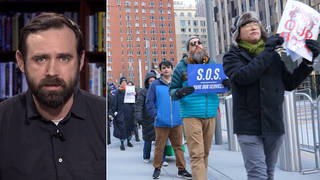

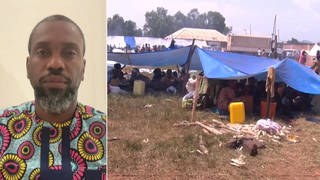
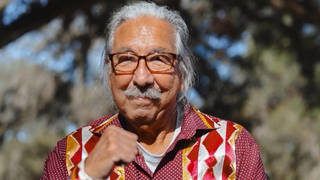

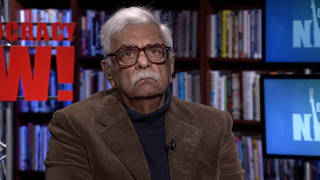
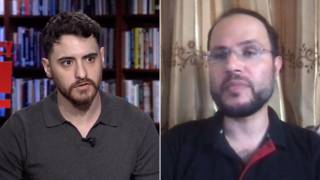
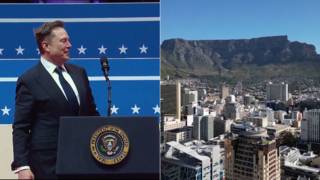


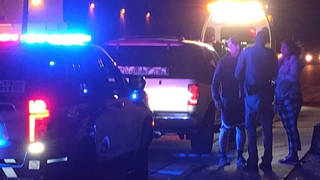
Media Options